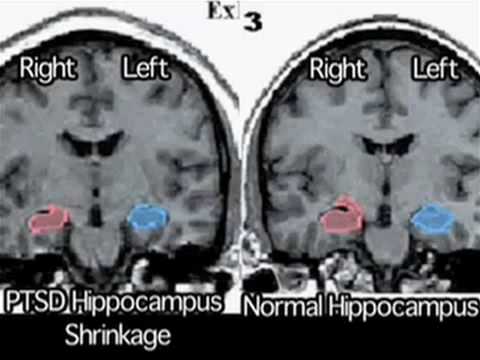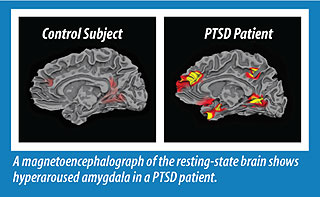BIOLOGICAL INVESTIGATIVE REPORT: BLOOD TYPING AND PTSD
By: Diana W.
“It was about eight o’clock that evening when the team was assembled once again… the most decorated FBI investigative force the Bureau had ever seen. This time, it was the circus. When we heard the news, we knew immediately it was a case only we could solve quickly enough to catch the murderer. Upon arrival to the scene, after the routine briefings, I had wandered around diligently enough to discover our murder weapon thrown haphazardly into a bush in close range to the circus tent. To my extreme delight, I saw ample dried blood coating the revolver’s handle in the starlight reflecting off of the barrel’s shining metal. And so from this blood, my biological conquest began.” -Agent Wildes
PRELUDE:
As a biological researcher and investigative member of this highly esteemed FBI forensic team, it is my job to discuss my findings concerning the collection of blood and its analysis from this case, as well as the biological causes and effects of Post Traumatic Stress Disorder (PTSD) on the proved to be culprit of this heinous murder. My findings consisted of the pinning of A- blood to Bruce Jones, a war veteran, and the consequent discovery of his PTSD, and how that may have affected his actions on the night he killed Bryan Fantana.
BLOOD TYPING:
Of the four suspects collected in connection to the crime, each conveniently carried a different blood type. Suspect One was tested to have AB+ blood. Suspect Two was tested to have A+ blood, and Suspect Three was tested to have A- blood.

Photo: Wikipedia
Above is a diagram simplifying the qualities of each blood type excluding the Rhesus, or Rh Factor of blood. The Rh Factor is a protein dwelling on the surface of each of one’s red blood cells. The existence of this factor provides the individual with positive blood, whereas the lack of this factor means the carrier has negative blood. Positive blood is a dominant trait while negative blood is recessive.
When I ran the blood found on the case’s murder weapon through a test by adding anti-serum, containing antibodies, to the dried fluid. I found that our murderer’s blood reacted with anti-A serum, meaning that his blood contained A antibodies. However, it did not react with the anti-B serum, meaning that the blood was strictly type A. After this discovery, due to two of our suspects having type A blood, I ran a Rhesus Factor test, and found that the blood on the murder weapon tested positive for the Rhesus Factor protein. Because of this, the evidence pointed right at Bruce Jones, the Afghan war veteran.

Header: PTSD UK
Bruce Jones was found to have Post Traumatic Stress Disorder, or PTSD. I strongly believe that his condition contributed to the execution of this crime. This disorder and its symptoms affects 20% of the veteran population in some way. It is a true issue amongst the veteran community, and it negatively affects the brain of the victim in many ways. Also, not to be ignored are the hormonal effects of this disorder. PTSD causes increased norepinephrine levels and decreased cortisol levels. However, these chemical effects will not be highlighted in the following analysis, as this is a strictly biological report. I did feel that they needed to be mentioned as well.

Statistical Image: Armed Forces Health Surveillance Branch
The above statistical image from the Armed Forces Health Surveillance Branch illustrates just how prominent PTSD has become in the modern military of the Unites States. The graphic shows by using staunchly appalling numerical figures how deployment negatively affects our soldiers.

Photo: Sarastarlight, YouTube
In terms of the human brain, PTSD has averse effects such as the shrinkage of the hippocampus, the brain part that controls memory. Because of this downsize, it is much more difficult for the brain to understand chronology of events. This is why victims are able to so vividly relive past experiences as though they are occurring in the present. It is very possible in the case of Bruce Jones that at the time of the murder, he was experiencing an episode that took him back to his time in Afghanistan. This would explain the randomness of the crime.

Photo: Vietnam Veterans of America
Additionally, there is increased activity in the PTSD victim’s amygdala, the brain region that controls the processing of emotions and fear response. This explains why victims of PTSD are more prone to be fearful in general as well as in situations other may feel are perfectly normal. Victims of PTSD are also more frequently anxious than normal people. In a highly social and loud environment like the circus, it is not unreasonable to assume that Bruce Jones’ brain had been hyperactive, producing heightened anxiety and fear that may have pressured his unfortunate response.

Photo: Shin et al. Biological Psychiatry, 2001
In the mind of victims plagued by PTSD, the Medial Prefrontal Cortex is affected with thinning as well as hyperactivity. This means that those with this disorder are not able to regulate negative emotions such as fear and anxiety well, especially in response to certain stimuli. For example, a loud noise, perhaps a circus cannon, may be interpreted by a victim of PTSD as gunfire, to which they would respond in an abnormal, possibly violent way. Another personal example to add to the inventory, is that my grandfather, a World War II veteran, would fall to the floor and yell whenever he heard a plane overhead. This very well could have been his Medial Frontal Cortex acting in a harmful way.

Photo: John Hopkins University Medicine
Research does indeed suggest that PTSD is about 30% heritable. Researches such as Ananda Amstadter Ph. D. are working on pinpointing the exact genes responsible for this disorder in order to better find a cure or at least a more beneficial treatment. Amstadter offers that there may be particular strings of DNA coding responsible for susceptibility for PTSD, and that identifying members of the military with these sequences can help them to treat those who return from combat in a state of trauma.
Bruce Jones’ exact motives for this crime remain unclear after interrogation, however, his PTSD is considered to be a player in the unfortunate demise of Raymond Fantana.
Case Closed.
(Almost)
-Agent Wildes
WORKS CITED:
Abraham, Sathya Achia. “Understanding the Biology of PTSD.” VCU News, Virginia Commonwealth University, 4 Nov. 2011, http://www.news.vcu.edu/article/Vet5. Accessed 6 April 2018.
“PTSD & Parkinson’s Disease: Longer Version.” uploaded by Sarastarlight. YouTube, 11 Mar. 2007, http://www.youtube.com/watch?v=_9MY0bbO0qw. Accessed 6 April 2018.
“The Neurobiology of PTSD.” uploaded by CottageHealthSystem. YouTube, 7 Apr. 2016, http://www.youtube.com/watch?v=hrIUPOtmeyQ. Accessed 3 April 2018.
“The Science and Biology of PTSD.” PTSD UK, http://www.ptsduk.org/what-is-ptsd/the-science-and-biology-of-ptsd/. Accessed 6 April 2017.
“Understanding Trauma: How Stress and Trauma Cause Chronic Pain, Anxiety, Depression, & PTSD.” uploaded by Associative Awareness Technique (AAT). YouTube, YouTube, 5 Oct. 2012, http://www.youtube.com/watch?v=byQBP7fq5vQ. Accessed 31 March 2018.
“Blood Typing Lab Instructions.” uploaded by Jeremy Reichel. YouTube, 5 Mar. 2013, http://www.youtube.com/watch?v=sw1GgWWTCxs. Accessed 31 March 2018.
